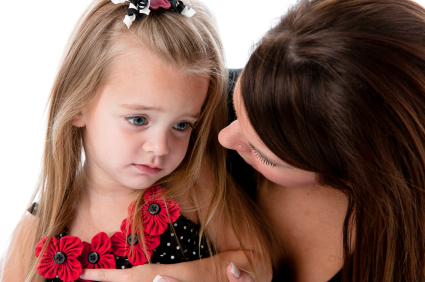This article by an expert paediatrician discusses persistent, long-term urinary incontince in children and possible treatment options.
Contents
- What is urinary incontinence?
- What are the symptoms of urinary incontinence in children?
- Diagnosing urinary incontinence in children
- What are urodynamic investigations?
- Treatment of urinary incontinence in children
- FAQs
What is urinary incontinence?
Urinary incontinence is defined as the involuntary and uncontrollable leakage of urine in varying amounts either during the day, at night, or both. Continuous incontinence is usually due a congenital malformation and will probably require surgical intervention. It is a fairly common problem and often it is either ignored or not pursued as it is felt that with time the problem will disappear. However, persistent urinary incontinence beyond the age of five years usually warrants investigation as it can be very distressing for both the child and family. Untreated this can result in social ostracism and lead to severe psychological problems that can affect the child in the long-term. It is important to have the problem assessed and to decide on directed treatment based on the underlying cause. The investigations are largely non-invasive and painless and both the child and the family should feel supported while they await a resolution of the problem. Treatment involves oral medication, behaviour changes, physiotherapy and in some cases bladder retraining. The best results are often obtained by combining a number of these treatment options and the cure rates are generally high.
What are the symptoms of urinary incontinence in children?
The main symptom of urinary incontinence is the leakage of urine either continuously or in intermittent discrete amounts. Associated symptoms include urgency, which is the sudden and unexpected immediate need to empty the bladder. There may be associated increased frequency of voiding, which is usually due to a reduction in the functional capacity of the bladder and commonly the result of severe urgency at small bladder volumes. Other symptoms include a typical posture adopted by children who suffer from severe urgency to try and prevent leakage. The child adopts a kneeling posture with the heel of the foot pressed into the perineum thereby compressing the urethra in an attempt to prevent urinary leakage (sometimes called “Vincent’s Curtsy”). Other more subtle symptoms include a poor intake of fluid, particularly during the daytime, as a way of coping with urinary frequency and incontinence and this results in greater thirst in the evenings. As a result these children will often drink most of their daily fluid in the late evening and this will further compound the night time wetting / urinary incontinence. An indirect effect of the reduced fluid intake is a tendency to hard stools and constipation, which is a fairly common associated symptom. A proportion of children will also have associated symptoms of urinary tract infections, typically cystitis. These include lower abdominal pain, pain on passing urine or strong smelling urine.
Diagnosing urinary incontinence in children

Persistent urinary incontinence beyond five years of age requires medical investigation. A good medical history and physical examination followed by some baseline investigations are a good starting point and will usually allow for a distinction to be made between primarily bedwetting at night and children with associated daytime symptoms. As continuous urinary incontinence is usually the result of some congenital malformation it should be investigated and treated as early as possible. The physical examination will usually not show anything remarkable in these children; however a small minority may have some subtle findings that can be responsible for the symptoms and therefore must be excluded in all cases.
It is therefore sensible to examine the abdomen to look for a palpable bladder which may be felt just above the pubic symphysis in the midline; or faecal loading, which is looked for in either flank and felt as firm/hard lumps that represent faeces in the large bowel. Examination of the spine looking for any fatty mass, tuft of hair, birthmark or a dimple, which may represent an underlying spinal cord abnormality, must be looked for and excluded. A genital examination will complete the physical examination and a note will be made of any pooling of urine in the opening to the vagina. This may represent vaginal reflux, which may be the cause of urinary incontinence, and this is relatively easy to treat. Assuming that the physical examination is unremarkable the next step is to proceed with some baseline investigations and in the first instance these include the completion of a frequency volume chart or diary and a detailed ultrasound scan of the urinary tract, including pre and post void urinary volumes. The child / family will be asked to complete a minimum of 2 twenty-four hour recordings of fluid intake and voided urine volumes in addition to documenting episodes of urinary leakage. This involves passing urine into a plastic jug or beaker with markings that allow measuring of the volume passed and an approximate estimate of fluid intake. This simple exercise is immensely informative as it allows the distinction to be made between pure bedwetting at night as opposed to children who have subtle or compensated daytime symptoms that represent an overactive bladder. The treatment for these two conditions is very different and therefore making the correct diagnosis is very important.
An ultrasound scan can also be performed that will screen the kidneys looking for any abnormality such as hydronephrosis, which is where the kidneys become swollen due to urine building up inside them, and which is usually suggestive of a congenital malformation as the cause of incontinence. An ultrasound scan will also provide information regarding bladder capacity and efficiency at emptying and can occasionally pick up vaginal reflux if this is present. Following a review of these baseline investigations the child may be referred for more targeted urodynamic investigations.
What are urodynamic investigations?
The measurement of the function or dysfunction of the urinary tract by any appropriate means constitutes a urodynamic investigation. Broadly the urodynamic investigations are classified into simple or non-invasive urodynamics and invasive or catheter urodynamics. These tests are carried out by dedicated specialist nurses and are very helpful in further understanding the cause of bladder dysfunction. The non-invasive urodynamics are also known as Bladder Function Assessments and these test usually take 3 – 4 hours to complete. In addition to the history and physical examination, the nurse will review the completed frequency – volume chart and will then ask the child to steadily drink fluids until ready to pass urine. The child then passes urine into a special toilet known as a flow meter that records the amount of urine passed, the rate or speed with which it is passed and the pattern of voiding. When the child has finished passing urine the nurse will check the bladder’s emptying efficiency by placing an ultrasound probe over the bladder and calculating how much urine has been left behind after voiding is complete. Typically the child will be asked to repeat this cycle three times to complete the assessment. The results help the clinician to decide the probable cause of the urinary incontinence, direct treatment and may be repeated subsequently to assess response to therapy. In selected cases an invasive urodynamic study will also be needed, which involves the placement of catheters, both in the urinary as well as gastro-intestinal tracts. These tests provide additional information of pressure changes within the bladder during bladder filling and bladder emptying. The catheters are placed in the bladder at the time of the study or more commonly may be placed under anaesthesia a day or two prior to the planned study.
A catheter is placed in the rectum at the time for the duration of the study and all tubes are removed on completion of the test. This test may be combined with x-ray imaging (known as a video-urodynamic test) and is usually carried out in the x-ray department. The test takes an hour and a half to two hours and is very useful in selected cases in getting to the bottom of the cause of urinary incontinence and planning treatment.
Treatment of urinary incontinence in children
Urinary incontinence can have very significant effects on both the child and the family. Treatment will depend on the cause and is broadly divided into the following three categories with a combination of more than one category commonly used to achieve best results:
- Medical management
- Behavioural changes/physiotherapy
- Surgical treatment
Medical management
This consists largely of drug therapy. The two main causes of functional urinary incontinence are overactive bladder and primary nocturnal enuresis (bedwetting from when the child was a baby). The mainstay of treatment for an overactive bladder is anticholinergic drugs like Oxybutynin, Tolterodine and more recently, Solifenacin. Extended release preparations are more effective and the newer drugs are more specific with fewer adverse effects. A good fluid intake is very important in conjunction with anticholinergic medication to maximise the benefit. Typically treatment is required for 6 – 12 months at the end of which the medications are discontinued. Relapse following cessation of treatment is uncommon. Common side effects of the anticholinergic medication include dryness of the mouth, flushing and constipation. The mainstay of drug therapy for nocturnal enuresis is Desmopressin, which is available as a tablet, or as Desmomelts. Nasal spray preparations are no longer licensed for use due to significant adverse effects. When effective this is a good way of managing trips away like sleepovers, camp or school trips etc. Relapse rates are high on cessation of treatment. Fluid restriction is very important in conjunction with Desmopressin therapy to maximise benefit. Other drugs used in the management of nocturnal enuresis include anticholinergics and tricyclic drugs.
Behavioural changes/physiotherapy
This includes alterations in fluid intake, dietary changes, pelvic floor exercises and the use of alarms for nocturnal enuresis. The treatment has to be tailored for individual patients.
Surgical treatment
This forms the mainstay of treatment for children with congenital malformations as the cause of their urinary incontinence. This may also have a role in the treatment of functional incontinence for example, the use of botulinum toxin for the treatment of overactive bladder.
FAQs:
1. Will my child grow out of this problem?
Most children improve with the passage of time; however certain conditions if untreated may persist into adult life.
2. How long will the treatment have to continue for?
Children with overactive bladders typically have to take medication for 6 – 12 months before a reliable resolution of the symptoms occurs. Medication courses for nocturnal enuresis last for six weeks to three months typically but may be continued intermittently for longer periods e.g. Desmotabs.
3. Is there any role for surgery in treating this problem?
Surgery usually does not play a role in the treatment of functional urinary incontinence. A minority of children may suffer from overactive bladder secondary to spinal cord tethering and may improve with surgery to untether the cord. Similarly, a small number of children may benefit from the injection of botulinum toxin to treat bladder muscle overactivity.
4. What support is available?
ERIC (Education and Resources for Improving Childhood Continence) is a national charity that provides information and support to children and young people and to their families and carers and they can be contacted via their website or telephone +44 (0) 117 960 3060.

